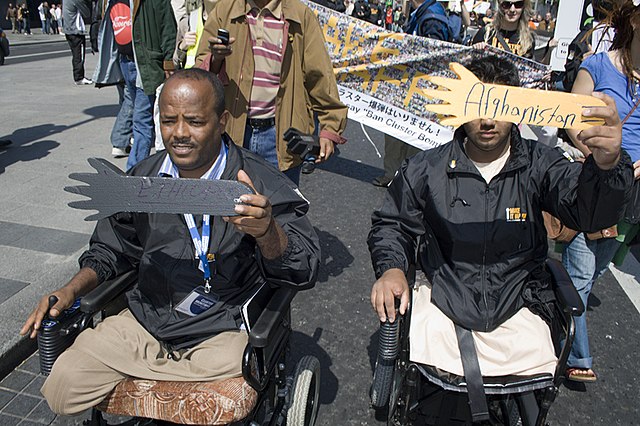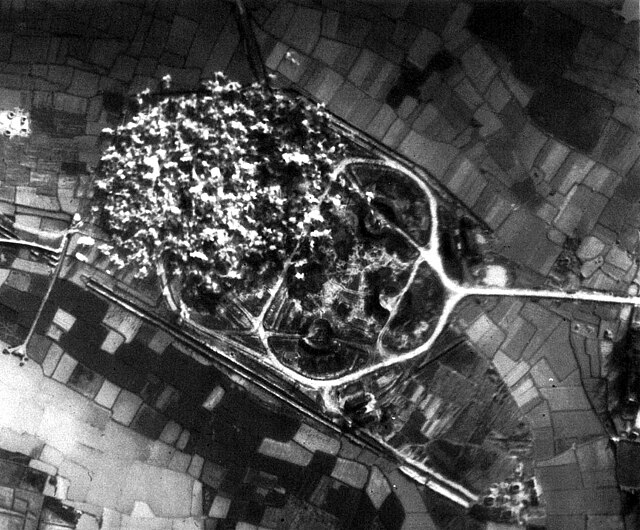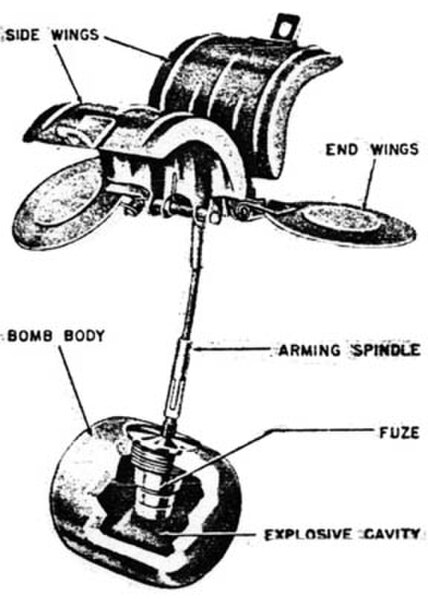Convention on Cluster Munitions
The Convention on Cluster Munitions (CCM) is an international treaty that prohibits all use, transfer, production, and stockpiling of cluster munitions, a type of explosive weapon which scatters submunitions ("bomblets") over an area. Additionally, the convention establishes a framework to support victim assistance, clearance of contaminated sites, risk reduction education, and stockpile destruction. The convention was adopted on 30 May 2008 in Dublin, and was opened for signature on 3 December 2008 in Oslo. It entered into force on 1 August 2010, six months after it was ratified by 30 states. As of December 2023, a total of 124 states are committed to the goal of the convention, with 112 states that have ratified it, and 12 states that have signed the convention but not yet ratified it.a
Ban Advocates from Afghanistan and Ethiopia demonstrating during the May 2008 Dublin conference
A cluster munition is a form of air-dropped or ground-launched explosive weapon that releases or ejects smaller submunitions. Commonly, this is a cluster bomb that ejects explosive bomblets that are designed to kill personnel and destroy vehicles. Other cluster munitions are designed to destroy runways or electric power transmission lines.
U.S. Honest John missile warhead cutaway around 1960, showing M134 bomblets filled with Sarin
Half of a surface-to-air missile site in North Vietnam blanketed in exploding bomblets dispersed by a U.S. cluster munition, Vietnam War
A cluster bomb is dropped at the Nightmare Range in South Korea
SD2 Butterfly Bomb circa 1940. Wings rotate as bomb falls, unscrewing the arming spindle connected to the fuze.





